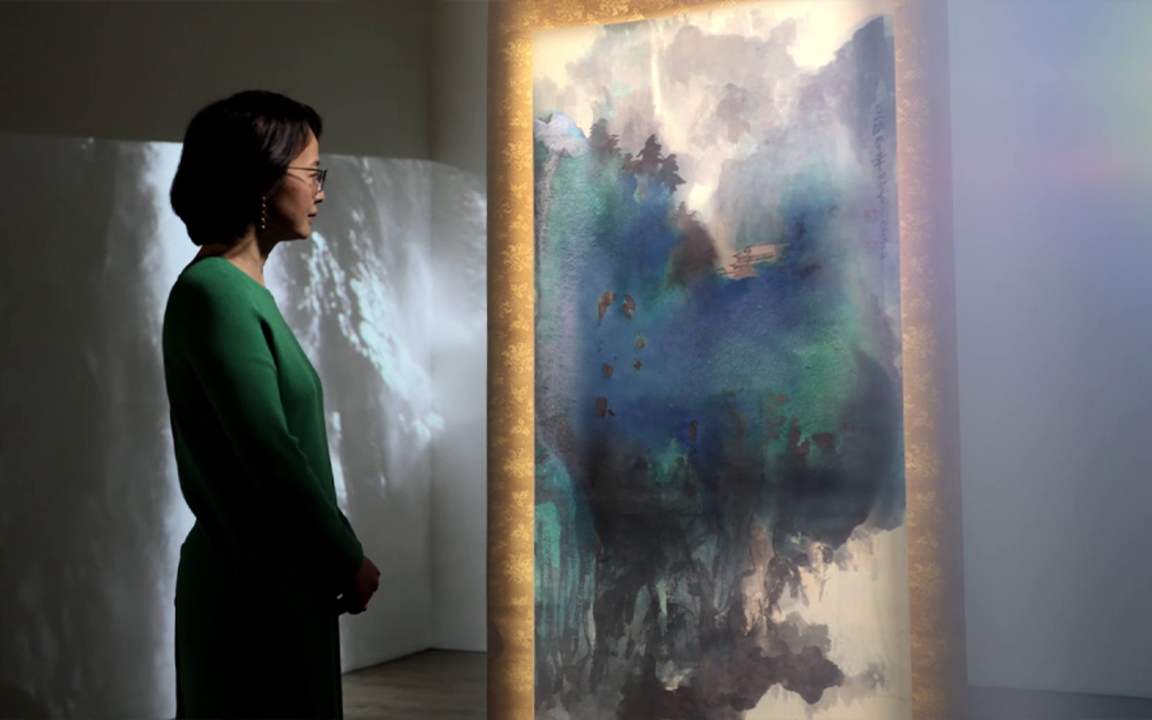
Robert Draws – Zhang Daqian is widely regarded as one of the most versatile and influential painters in both classic and modern Chinese art. Born in 1899, Zhang’s mastery of traditional ink techniques and his innovative use of color set him apart in the art world. Throughout his long career, he bridged the gap between classical Chinese painting and modern art movements, earning international acclaim and respect. Zhang Daqian’s works continue to inspire artists and collectors around the globe, making him a pivotal figure in art history.
Zhang Daqian was born in Sichuan Province, China. From a young age, he was exposed to the rich traditions of Chinese painting, calligraphy, and poetry. His formal education in art began with rigorous training under various masters, where he learned the fine details of brushwork and the subtlety of ink washes. Early in his career, Zhang’s talents were already evident, and his works were praised for their elegance and precision.
The classic style of painting was deeply rooted in Zhang’s early works. However, it was not long before he began to experiment with more vibrant colors and bold brushstrokes. These innovations showcased his ability to merge the old with the new, a quality that would define his artistic journey.
“Read about: Thomas Gainsborough: Master of Rococo Portraits and Landscapes”
Zhang Daqian is particularly known for his expertise in traditional Chinese ink painting. He mastered various techniques including “xieyi” (freehand brushwork) and “gongbi” (meticulous brushwork). His ink paintings often depicted landscapes, flowers, and figures, reflecting both the natural world and human emotions. Zhang’s ink work was praised for its fluidity and depth, with layers of ink creating a sense of texture and movement.
Many of Zhang’s ink paintings were influenced by the great masters of Chinese art history. He was known to study and replicate ancient paintings, and through this process, he learned to refine his style. Some of his most celebrated ink works have been exhibited in prestigious galleries worldwide, demonstrating his skill and dedication to this traditional medium.
While Zhang Daqian excelled in ink, his exploration of color painting distinguished him from many of his contemporaries. He developed a unique style using vibrant pigments and dynamic brushwork that gave his paintings a modern feel. Zhang’s use of color was not simply decorative but was applied with thoughtful intent to evoke mood and atmosphere.
One of his signature techniques involved splashing or “drip” painting, where colors were applied spontaneously to create abstract patterns and textures. This approach was revolutionary in the context of Chinese painting, blending Eastern techniques with influences from Western abstract art.
“Read more: Discovery Education Launches Summer Professional Development Resources for Educators”
Zhang Daqian’s talent did not go unnoticed beyond China. During his lifetime, he traveled extensively across Asia, Europe, and the Americas. His exhibitions abroad introduced global audiences to the richness of Chinese painting traditions fused with contemporary styles. Art critics and collectors alike admired his ability to innovate while respecting the roots of Chinese art.
His influence extended to numerous artists who sought to combine cultural heritage with new artistic expressions. Zhang Daqian’s legacy is reflected in the works of many modern painters who continue to draw inspiration from his techniques and vision.
Despite his fame, Zhang Daqian led a relatively private life. He faced challenges such as political turmoil in China, which led him to relocate multiple times. Nevertheless, his dedication to art never wavered. In his later years, he continued to produce remarkable works, exploring themes of nature, spirituality, and the human condition.
Zhang’s paintings from this period are characterized by a mature style, blending traditional ink with bold colors and abstract forms. His works remain highly sought after in auctions, often fetching record prices.
Zhang Daqian’s contributions to both classic and modern art have been widely recognized. Museums around the world house his masterpieces, and his techniques are studied by art students internationally. His work represents a bridge between generations, preserving Chinese artistic traditions while embracing innovation.
Through his art, Zhang Daqian demonstrated that the boundaries between old and new, East and West, could be transcended. His paintings continue to captivate audiences and affirm his place as a master of ink and color in the history of art.